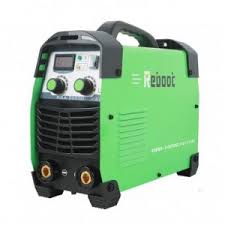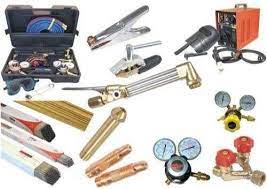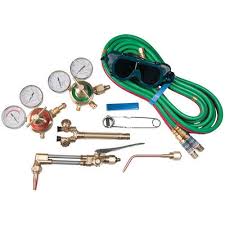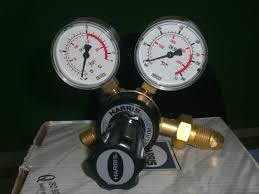Welding is a fabrication process that joins materials, usually metals or thermoplastics, by using high heat to melt the parts together and allowing them to cool, causing fusion. Welding is distinct from lower temperature techniques such as brazing and soldering, which do not melt the base metal (parent metal).
In addition to melting the base metal, a filler material is typically added to the joint to form a pool of molten material (the weld pool) that cools to form a joint that, based on weld configuration (butt, full penetration, fillet, etc.), can be stronger than the base material. Pressure may also be used in conjunction with heat or by itself to produce a weld. Welding also requires a form of shield to protect the filler metals or melted metals from being contaminated or oxidized.
Welding Helmet
It is an essential type of welding equipment that is considered the most important piece of personal protective equipment that a welder should have. This helmet not only protects the eyes and skin from serious sparks, but also from potentially vision-damaging ultraviolet and infrared rays released by arcs
Handy Gloves
Welding gloves are tools that protect a welder’s hands from the dangers of welding. Leather or asbestos gloves are used for the protection of hands against any possible burn during welding. These gloves allow the operator to be protected from electric shock, extreme heat, and ultraviolet and infrared radiation, and also provide abrasion resistance and increased grip.
A welding machine is a device used to join materials together. Welding machines produce heat that melts metal parts so that these parts can be joined. Thus, when it cools, it becomes a fixed and resistant joint. Different materials can be welded, although the welding machine generally works best with MetalsToday this is the most popular type of welding. This machine uses electrical energy, with which an electric arc is formed between the metal to be welded and the electrode used. There are different types, depending on the electrode to be used, such as:
• Manual arc welding of metal;
• Metal arc gas welding;
• Arc welding of the fused core;
• Arc welding of tungsten gas;
• Submerged arc welding.



Welding rod A welding rod is a generic name used to refer to electrodes or filler metal that is used to join two other base metals when performing shielded metal arc welding Rod
Welding Torch
It is also known as a blow-pipe. The instrument is meant for producing the oxygen-acetylene flame. It is provided with two gas adjusting knobs (one for each gas). The desired type of flame can be produced by adjusting the two knobs. Two hose pipes are clamped on the two inlets of the instrument.
Gases are mixed in the mixing chambers and then the mixture comes out of the welding torch through its nozzle or tip where it is converted into flame with the help of a spark lighter. The nozzle or tip is made to bear the high temperatures.
 Nozzle’s size depends on the size of its hole and they are replaceable. The size is marked on the nozzle which indicates the thickness of the metallic sheets to be welded with that nozzle. There are two main types of welding torches.
Nozzle’s size depends on the size of its hole and they are replaceable. The size is marked on the nozzle which indicates the thickness of the metallic sheets to be welded with that nozzle. There are two main types of welding torches.Gas Regulator
For the welding process, the oxygen and acetylene gases reach the welding torch through gas regulators. There are two main functions of a gas regulator:
- To maintain necessary gas pressure during the course of welding.
- To supply the gas to the welding torch at low pressure. The regulator’s body is generally made of brass metal.


























































